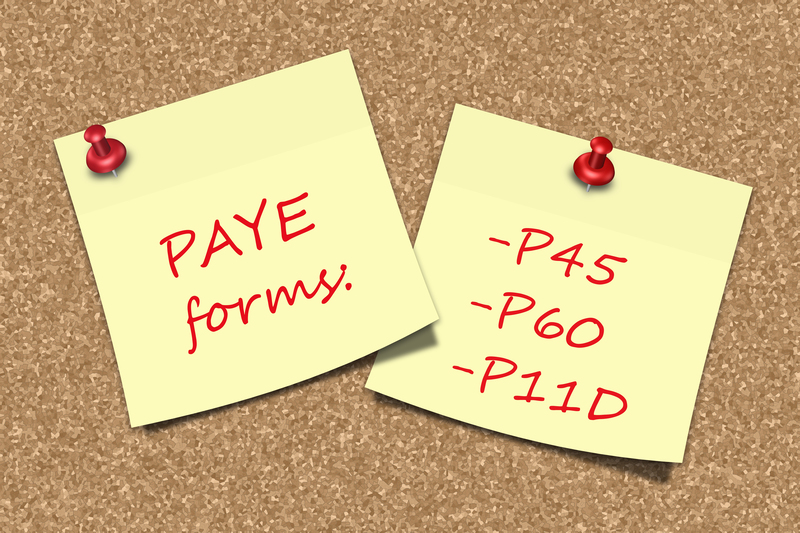How to Move a Piano Safely and Why DIY Can Be Dangerous
Moving a piano is not like moving an ordinary piece of furniture. These majestic instruments are not only heavy and awkwardly shaped, but they are also extremely delicate and valuable. Many homeowners are tempted to undertake a piano move themselves to save money, but DIY piano moving can lead to damage, injury, and much higher costs in the long run.
In this comprehensive guide, we'll explore how to move a piano safely, the risks of DIY moving, and why hiring professional piano movers is your best bet.
Why Are Pianos So Difficult To Move?
Pianos, whether upright or grand, are some of the most challenging items to relocate in any home or business. There are multiple reasons why moving a piano is a unique challenge:
- Weight: Pianos can weigh anywhere from 300 lbs (small uprights) to over 1,200 lbs (concert grands).
- Size & Shape: Their size makes maneuvering through doorways, hallways, and stairs difficult.
- Fragility: The exterior wood and internal components (keys, strings, pedals) are sensitive to bumps, moisture, and improper handling.
- Value: Many pianos are priceless heirlooms or expensive investments.
- Balance: They are often top-heavy and can easily tip if not transported correctly.
Because of these factors, moving a piano safely requires specialized knowledge, equipment, and experience. Attempting to move one without proper preparation or tools can result in costly damages - to both your piano and your property.

Types of Pianos and Their Moving Challenges
Upright Pianos
Upright pianos are tall and narrow. Their weight is distributed vertically, which makes them especially tricky on stairs or when making tight turns.
Grand Pianos
Grand pianos are large and have uniquely-shaped frames. They frequently require partial disassembly (removing legs, pedal lyre, and sometimes the lid) before transportation. The biggest risk comes from their length and awkward, uneven weight distribution.
Digital Pianos
Digital pianos are generally lighter and easier to move, but some high-end models can still be unwieldy and delicate. Unlike acoustic pianos, they often contain sensitive electronic components that can suffer during a bumpy or damp move.
Why DIY Piano Moving Can Be Dangerous
Despite the temptation to save money with a self-move, there are significant risks associated with do-it-yourself piano moving. Let's explore the potential dangers and drawbacks:
1. Risk of Physical Injury
- Pianos are extremely heavy; attempting to lift one without proper training or equipment can result in serious back, shoulder, or leg injuries.
- Improper technique or underestimating the weight can easily lead to accidents like crushed fingers, pinched limbs, or even more severe trauma.
- Stairs, narrow doorways, and tight corners increase the likelihood of mishaps.
2. Risk of Property Damage
- Floors: The sheer weight can gouge, scratch, or crack hardwood, tile, and vinyl flooring.
- Walls & Door Frames: One slip can leave dents, chips, or holes in drywall and woodwork.
- Stairs: Dropping or sliding a piano can damage banisters, treads, or cause a collapse.
3. Risk of Damaging the Piano
- The internal mechanism of a piano is made up of thousands of delicate pieces; a jolt or unexpected vibration can knock keys out of alignment or snap strings.
- Poor packing and tying during transit can leave your piano vulnerable to scratches, structural cracks, or moisture damage.
- Once a piano is damaged, repairs can cost more than hiring expert movers in the first place.
Simply put, the risk of doing it yourself is high while the potential savings are often an illusion.
How to Prepare for a Piano Move
If you still decide to attempt moving your piano (especially for short distances, like within the same room), follow these preparatory steps:
- Measure everything: Doorways, staircases, hallways, and the piano itself. Ensure that it will fit through all passages on the planned route.
- Clear the path: Remove all obstacles, carpets, or items that could cause tripping or impede movement.
- Wrap and protect: Use heavy blankets and padding to cover the piano's exterior. Secure with moving straps and wrap corners with extra protection.
- Recruit strong helpers: Never attempt to move a piano alone. At least 3-5 physically capable helpers are needed for most upright pianos, and more for grands.
- Rent or buy special equipment: At a minimum, you'll need a sturdy dolly with piano straps, heavy-duty gloves, and sometimes a piano board (a custom skid). For grand pianos, leg removal tools and brackets are typically necessary.
- Communicate clearly: Appoint someone to direct everyone and make sure all helpers know the plan before you lift a finger.
Step-by-Step Instructions for a Safe Piano Move
It is highly recommended to hire professional piano movers. However, for educational purposes, here's a general guide for moving an upright piano:
- Secure the Keyboard Lid: Close and lock the keyboard cover to protect the keys from damage. Never use tape directly on the finish, as it can ruin the wood or veneering.
- Protect the Body: Wrap the piano in thick, non-slip moving blankets, covering the corners and edges. Secure blankets with moving tape or plastic wrap - never apply tape directly to the piano.
- Lifting: With at least three helpers, gently tilt the piano back and slide a heavy-duty, locking dolly underneath. Keep the piano upright at all times--never on its back or side. Pianos are designed to stand in one direction; tilting can shift sensitive mechanisms inside.
- Transporting: Secure the piano to the dolly using restraint straps. Move slowly and communicate. Whenever you reach stairs, at least one person should take the lead weight, while others steady the rear to prevent tipping.
- Loading: Use a proper ramp to transfer the piano into a vehicle with a low, firm base (not a standard moving truck with a high bed).
- Securing: Once in the van or truck, use additional straps to securely tie down the piano and ensure it cannot shift while driving.
- Unloading & Setup: Carefully reverse the process at the destination. Check the piano for damage and allow it time to acclimate before tuning or playing.
Tip: Never attempt to move a grand piano without professional help. Their shape and disassembly requirements are beyond the scope of safe DIY moving.
The Professional Piano Moving Process
A reputable piano moving company will have:
- Experienced, trained movers with years of experience handling all types of pianos
- Specialized dollies and skids designed to distribute the piano's weight and prevent impact damage
- Professional wrapping materials and moving pads
- Advanced equipment for stairway lifts, cranes for multi-floor moves, and custom vehicles with air-ride suspension
- Comprehensive insurance coverage for your instrument and property
Benefits of Using a Professional Piano Mover
- Expertise: Professionals know the best techniques for every model and situation.
- Safety: Reduces risk to people and property.
- Peace of Mind: Insurance covers accidents and unforeseen issues.
- Speed & Efficiency: Professional teams work quickly and minimize downtime for your piano.
With specialized piano moving services, your piano arrives safe, sound, and ready to play.
Common DIY Piano Moving Mistakes
Many well-intentioned homeowners make the following critical mistakes when attempting to move their own piano:
- Attempting it alone: Underestimating the required manpower leads to accidents and injuries.
- Using inappropriate tools: Standard furniture dollies or straps are not designed for pianos' extreme weight or dimensions.
- Failing to measure: Getting stuck in too-tight doorways or hallways damages both the piano and the property.
- Poor protection: Thin blankets or no padding at all leaves your piano exposed to scratches and major damage.
- Ineffective securing in the vehicle: If not strapped tightly, pianos can topple or roll during transit.
- Neglecting to tune after the move: Even a carefully moved piano will need retuning due to internal shifting -- something many DIYers forget.
How Much Does Professional Piano Moving Cost?
Many believe professional piano moving is too expensive, but consider the potential costs of damage or personal injury. In reality, hiring experts is often more affordable than repairing a damaged piano.
- Upright Piano Move (local): $150-$400 on average
- Grand Piano Move (local): $300-$1,000 depending on size and difficulty
- Long Distance Moves: Costs are based on distance and the instrument's size; expect anywhere from $500-$2,000+
- Additional Fees: Flights of stairs, elevator use, crane lifts, and special handling may increase the total price.
Professional movers also provide insurance coverage -- something a DIY move cannot match.
Is It Ever Safe To Move a Piano Yourself?
There are certain situations where a DIY piano move can be relatively safe, provided you take all the necessary precautions:
- Moving a very small spinet or console piano a few feet (not involving stairs or tight spaces)
- Transporting a lightweight digital piano (not acoustic)
- With adequate manpower, equipment, and careful planning for "room-to-room" moves only
Even in these situations, however, the risks far outweigh the savings in most cases. The best course of action is always to consult with a piano moving professional for advice before attempting a move yourself.

Piano Moving Safety--Key Takeaways
- Pianos are extremely heavy, fragile, and valuable instruments requiring special handling.
- DIY moving puts both the piano and your property at significant risk and can lead to personal injury.
- Professional piano movers have the knowledge, tools, and insurance to move your instrument safely and efficiently.
- If you must attempt a do-it-yourself move, plan extensively, use proper equipment, and never move a grand piano without expert help.
Conclusion: Invest in Your Piano's Safety
Whether you own a family upright, a cherished baby grand, or a concert-quality instrument, your piano deserves the utmost care during a move. Attempting a DIY piano move can result in irreversible damage to the instrument, property, or even yourself. By entrusting the process to qualified professionals, you not only protect your investment but also ensure the music can play on for generations to come.
In summary: When considering how to move a piano safely, remember that skill, specialized equipment, and experience make all the difference. Avoid the dangers and stress of do-it-yourself piano moving--give your prized instrument the safe, professional relocation it deserves.



